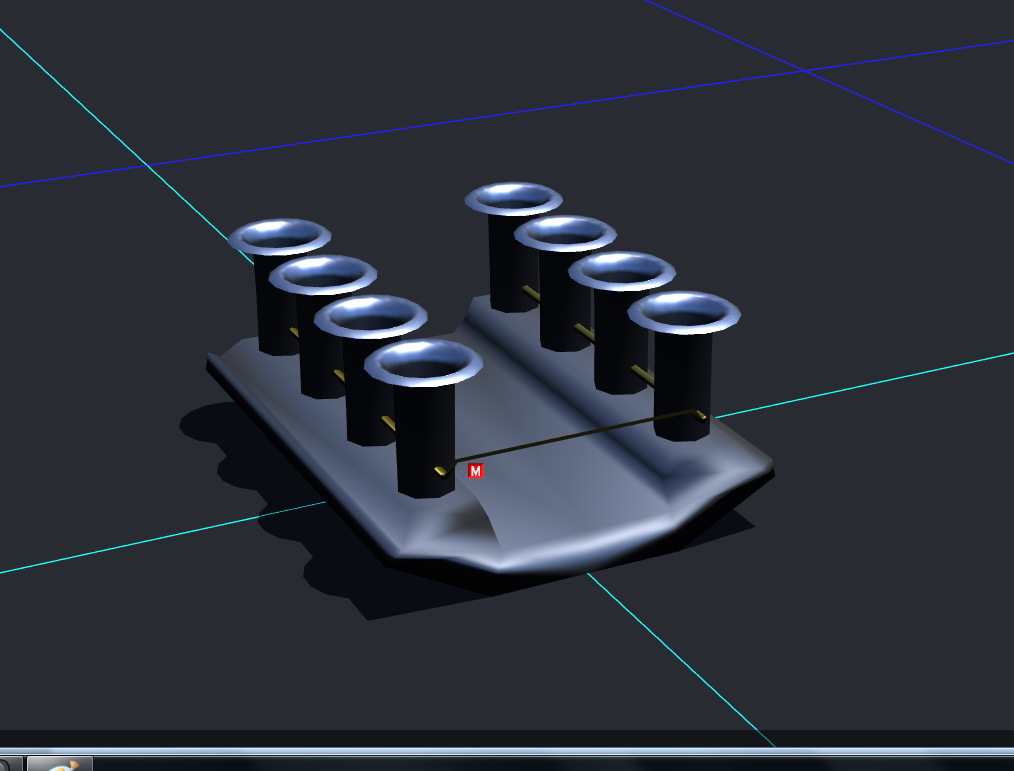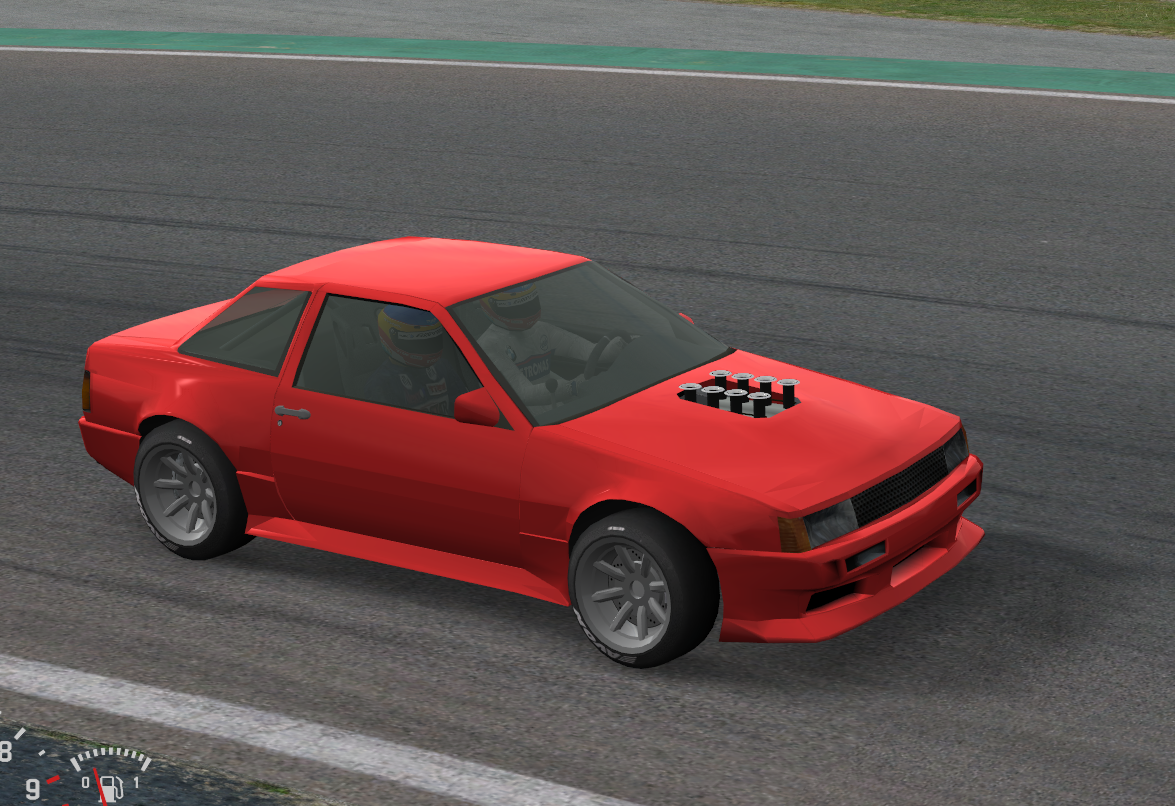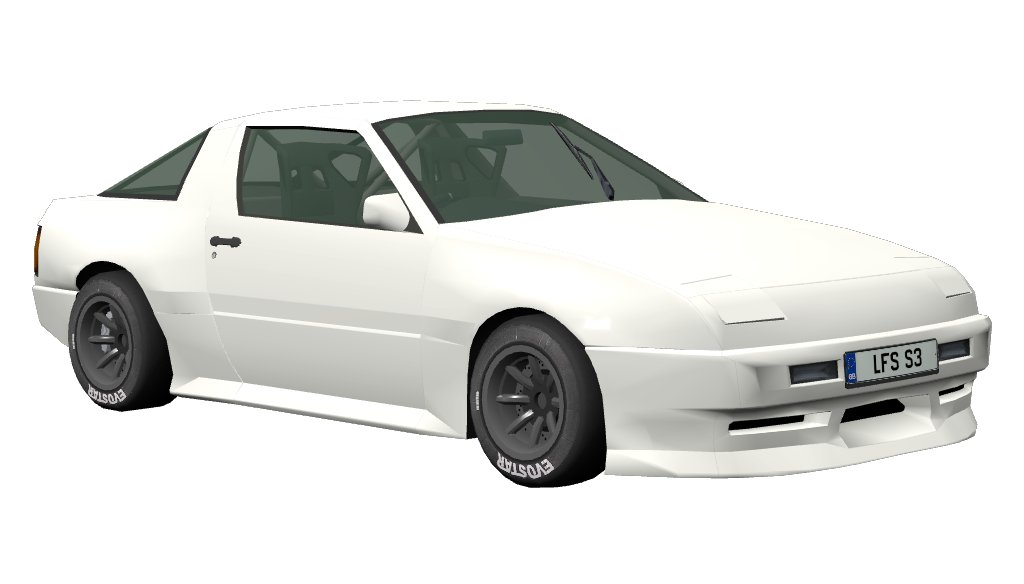Thank you,
Good progress coming down the pipe line... just working on a base model version. I have a mid way modified version finished. None of these have a 350cid V8 though! 4AGE only 💯💯
Did you happen to turn aerodynamic resistance to 0? .400 is the baseline. It sets the speedometer based on aero drag and bhp I believe
Me too! I love them and I’m so lucky that I lived pretty near their factory and the race tracks in California and have gotten to learn from them.
I don’t want to step on the devs toes! I have sent them an email to make sure this is OK! There is at least one other big name that has said they’re OK with it but I can’t say that officially yet until that’s figured out.
I reached out to the very successful drift suspension company Parts Shop Max and have received consent from them.
More and more I find that having the spindle offset forward or backwards to adjust the trail independently of the caster is a missing essential piece to accurately replicate many real life car suspension geometry. I see you do have the option on the motorcycle forks, but we could definitely use it on the cars as well.
working....

some inspiration

trying to add detail but keep polys low enough to not be a drag.
does anyone know how to adjust smoothing groups on triangles?

some inspiration
trying to add detail but keep polys low enough to not be a drag.
does anyone know how to adjust smoothing groups on triangles?
Last edited by RE Amemiya, .
80's sport coupe
wip.....
2400mm wheelbase
1.8 na
xrg based, sort of
Does suspension mass constant increase the suspension strength? If so in what way. Or what does influence the strength
The AI feature seems to be pretty good overall. A+
This is weird but,
I set my ffb wheel axis backwards and the range to -110 and 110 and tilted it up like handlebars.
Then I set the steering lock to 12*. And suddenly I could Ride. But the cornering speed was awful, a stock xrg could go faster than a 180lb bike on slicks.
Then I decided to add a “wing” about 3-4 meters underground with side drag of max.
Then it felt a lot more real.
Then I added a battery about 1.5 meters in the air and it felt right.
Odd indeed
I set my ffb wheel axis backwards and the range to -110 and 110 and tilted it up like handlebars.
Then I set the steering lock to 12*. And suddenly I could Ride. But the cornering speed was awful, a stock xrg could go faster than a 180lb bike on slicks.
Then I decided to add a “wing” about 3-4 meters underground with side drag of max.
Then it felt a lot more real.
Then I added a battery about 1.5 meters in the air and it felt right.
Odd indeed
Basically, just hit the corner on a barrier gently 1-2x. you can see polygons go through the driver. then when you Shift+R, it stays glitchy
I would love a max down or max wheel travel modifier as well. Lots of off road cars would perform better with 700mm of travel, but the rules say 320 or 350! (Sometimes less)
Wow this is an exact question I came here to ask
This morning.
This morning.
Ace pilot, the license on that Capri is “CC Attribution” which means that you may use the model for any purpose that you want, even commercially. Just be sure to credit the model creator in the cars mod upload.
CC < Creative Commons (free for use and mods)
Attribution < give credit
CC < Creative Commons (free for use and mods)
Attribution < give credit
In my opinion, if you know how to create a good and accurate driving experience. Then log many hours privately testing and tuning the car,. If you find a model online for sale for $10-20 I really think it would be worth it for a great mod to be introduced to LFS. But it’s up to the modder if it would be worth adding a professional model on top of their physics interpretation.
Engine maxes out at 12L for “truck”
You may want to try touring car
You may want to try touring car
I like this car as well, I’d like to see more of these poly lineup. My kid loves to play with these fun cars
bump. this is now in the files section of lfs.net, bottom left.
I’m not sure if this helps but if you max the resistance setting it often bleeds off peak horsepower.
Try optimizing for a front scrub of .020-.030, Inclination of 9-10*. Included angle 8.5. Caster 4 to 5.
LCA should be about 280mm
UCA choice be around 240mm
Put in the driver and set the lower control arm to be about level (move the lower pivot upwards or downwards in the Special draw masses mode)
The upper should be slightly tilted down towards the middle of the car.
If you set the no springs mode you should gain 2.5 to 3* negative camber
In the game LFS (not editor) with driver, camber for race should be -2.5 front and -0.2 rear as a baseline. Toe 0 front +0.1 rear.
The rear set to Trailing arm, and put the lower pivot low, and far forward, 30-40mm under the drivers tail bone. Maybe a little lower.
Set the rear camber to -0.2
Move the engine around so the COG height is around 340mm.
Set the suspension mass constant relatively low and scale up the frame mass to compensate.
Try braking at 800Nm and 71% to start.
Tire pressure 20psi.
Springs 40 rear 60 front for race
Dampers 5 bump rear 2 bump front
Dampers 3 rebounds rear 6.5 front
0 sway rear 30 front
That’s my suggestion!
LCA should be about 280mm
UCA choice be around 240mm
Put in the driver and set the lower control arm to be about level (move the lower pivot upwards or downwards in the Special draw masses mode)
The upper should be slightly tilted down towards the middle of the car.
If you set the no springs mode you should gain 2.5 to 3* negative camber
In the game LFS (not editor) with driver, camber for race should be -2.5 front and -0.2 rear as a baseline. Toe 0 front +0.1 rear.
The rear set to Trailing arm, and put the lower pivot low, and far forward, 30-40mm under the drivers tail bone. Maybe a little lower.
Set the rear camber to -0.2
Move the engine around so the COG height is around 340mm.
Set the suspension mass constant relatively low and scale up the frame mass to compensate.
Try braking at 800Nm and 71% to start.
Tire pressure 20psi.
Springs 40 rear 60 front for race
Dampers 5 bump rear 2 bump front
Dampers 3 rebounds rear 6.5 front
0 sway rear 30 front
That’s my suggestion!
XR N2 RACER
Vehicle mod: XR N2 RACER
Details page: https://www.lfs.net/files/vehmods/F69442
SHORT DESCRIPTION:
DESCRIPTION:
COVER SCREENSHOT:

Details page: https://www.lfs.net/files/vehmods/F69442
SHORT DESCRIPTION:
DESCRIPTION:
COVER SCREENSHOT:
FGED GREDG RDFGDR GSFDG